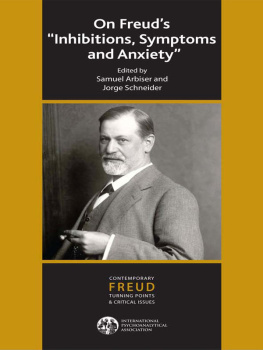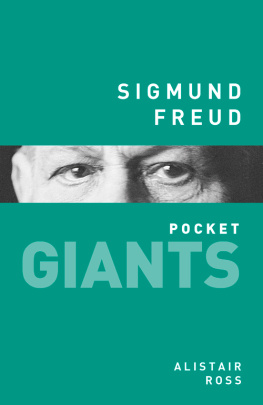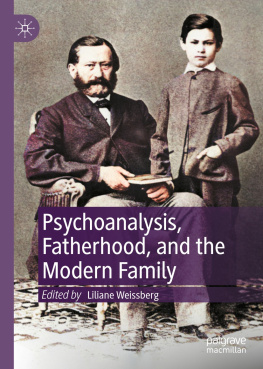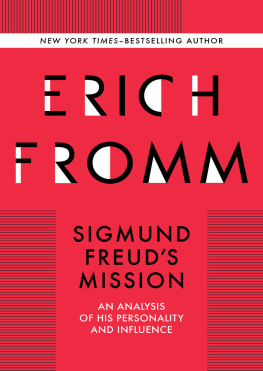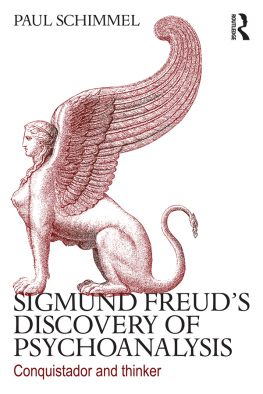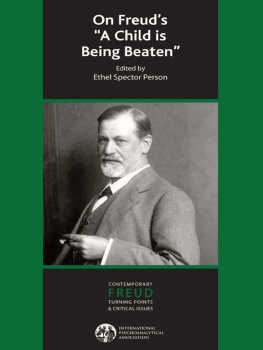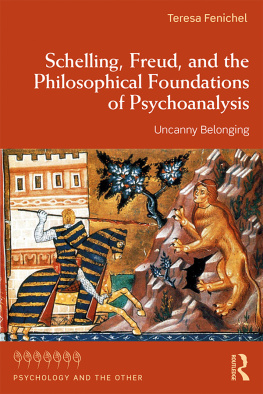ACKNOWLEDGEMENTS
In publishing this book, we would like to express our gratitude to all those people who collaborated in making it possible. First, all the contributors who have provided material that we are sure the reader will find enjoyable and stimulating. Moreover, our gratitude goes to our colleagues on the Publications Committee from whom we received continual support and wise professional advice, and in particular to the former and current chairs, Leticia Glocer de Fiorini and Gennaro Saragnano. Special mention should also go to Rhoda Bawdekar who, with a keen eye and diligent manner, ensured that the project did not stray from its set objectives. Finally, thanks also to our publishers, Karnac Books.
Samuel Arbiser & Jorge Schneider
The correlation between anxiety and danger: vicissitudes of mental functioning
Horacio Rotemberg
Introduction
Sigmund Freud reshaped his theoretical convictions throughout his work, in accordance with the impositions of his clinical exercises.
This way of conducting his research allowed him to develop various explicative models of the mind, all deriving from the same point of view: metapsychology. He gradually expanded the meaning of the underlying economic basepsychic energyin these models and elaborated on their structure and psychic dynamics.
Some of his essays are clear proof of the moments he could epitomise his changing theoretical thinking. This can be especially seen in the essay Inhibitions, Symptoms and Anxiety (Freud, 1926d).
In this paper, the new structural model ego-id-superego relates to the issue of narcissism through situations that threaten subjective integrity. Also included in Inhibitionsare the unconscious processes that characterise the new elements of personality, promoting connections and interaction between them outside the conscious level of awareness. The topos of the unconscious, now more complex, still supports the Freudian view. The tension between Eros and Thanatos surrounds the dangers that threaten the ego. Moreover, this piece clearly presents external reality as an unavoidable reference of the psyche, comparable to a fourth element of personality.
Our aim is to specify, in Inhibitions, its theoretical intricacy on the basis of the new concept of anxiety that Freud synthesises in that paper. We see that the articulation between anxiety and the situation of danger indicates a novel epigenesis for this emotional state, related to modifications in the conscious states of the ego. The issue of anxiety appears during the processes of fixation of certain experiences, which will influence different structural destinations for different psychopathological conditions. From this perspective, we can find in Inhibitions, Symptoms and Anxiety theoretical elements that help us build a psychoanalytical nosology adapted to our time. Freud himself attempts in his paper a reassessment of the transference psychoneuroses, based on the Oedipus complex and castration anxiety ascribed to it. Our task is to resume this construction and compare it to the effect that other situations of danger have on the determination of psychotic manifestations, as well as on structures proper to our time, as is the case of borderline structure.
In this introduction, we would like to clarify the meaning attributed to the term epigenesis. We consider epigenesis as the process through which the experience affects the constitutional disposition of the subject propitiating a series of transformations that generate the psychic structure. Contextual effects successively affect the previously established and fixated structure, paving the way for potentially new manifestations. Erikson introduced this word to psychoanalysis terminology in his theorisation on stages of development (Erikson, 1982). Our use of the term is influenced by the Bionian conception of transformation in conjunction and contrasted to the Freudian construction of primal repression-fixation-disavowal of experience (Bion, 1965).
In the next section we will use this theoretical resources to articulate the epigenesis of anxiety to the psychic structuring process, incorporating Freud's contributions in Inhibitions, Symptoms and Anxiety to the rest of his contributions throughout his work.
The epigenesis of anxiety
Anxiety, among all affects encompassed in psychoanalysis, is a paradigmatic emotional state. In his early career, Freud defines affect and representation as representing the drives in the psychic structure. From a metapsychological point of view, affect is basically characterised, though not exclusively, by the economic dimension. Freudian considerations define it as a tendency to discharge. This definition, ultimately combined with the idea that affects are phylogenetic reminiscencesFragment of an Analysis of a Case of Hysteria (1905e), poses the problem on the origin of the quantities that have an effect on mental functioning. In Project for a Scientific Psychology (1895a) the energy stimuli are already internal as well as external. The former are subsidiary of what will then become the drive. The latter, when they exceed certain intensity, will originate the concept of psychic trauma.
In the Freudian work On the psychical mechanisms of hysterical phenomena: preliminary communication we find (1893d, p. 6) this definition for psychical trauma: Any experience which calls up distressing affectssuch as those of fright, anxiety, shame or psychical painmay operate as a trauma of this kind (my italics).
This early definition establishes a clear articulation between anxiety and psychical trauma. Anxiety is an existential expression of the disturbing emotional impact certain external stimuli generate on the psyche, and not only the affective expression of a disconnected endogenous energy.
These Freudian considerations find a new field of realisation in Inhibitions, Symptoms and Anxiety. This paper bridges the dispute with Rank over the trauma of birth and its possible repetition during states of anxiety, taking this event as the first of a series in a chain linked through another series of events that confront the subject with various painful experiences. It is not the original trauma that is repeated in each cycle. New contextual conditions feature and advance renewed traumatic impacts on the subject. The elements in this series are over-determined by both structural factors as well as linked environmental factors. The path of this series involves acknowledging the current narcissist dimension and its successive transformations; the renewed perceptual and instrumental capacity of the ego in its relationship with itself and the environment, and the threatening conditions anticipated by the ego in its perceptual contact with exterior reality.
This perspective will allow us to address two types of anxiety provided for in Inhibitions. : automatic anxiety and signal anxietythe latter being a product of the instrumental transformation of the former.
Automatic anxiety directly corresponds, in this new theory, to the psychic trauma defined in the Preliminary communication. In Inhibitions, Symptoms and Anxiety, Freud indicates that in early infancy the individual is not really equipped to master psychically the large sums of excitation that reach him whether from without or from within. This condition results from the psychic helplessness typical of the premature state characteristic to the breastfeeding baby. In this context, the experience of birth is archetypical; it provided a model to grasp the consciousness's labour that, in the economy of its narcissistic libido due to the afflux of large sums of excitation crowding in on it, can only register pleasure and pain in the beginnings. It is in his work Project for a scientific psychology (1895a) where Freud specifies that the traumatic experience is fixated as an unpleasant experience of pain that, if reinvested, arises as an inner source for potential psychic catastrophe. This disruptive energy movement, directly derived from experience or re-activated through experience, is what defines automatic anxiety. We understand that this development enables the comparison, in the same fashion as Freud, between the automatic anxiety and the experience of horror, of nameless terror, yet with an underlying pattern, paraphrasing Bion's formula. The psyche is immersed in a situation that overwhelms him/her, that drags him/her to a state of intolerable, horrendous, painful, and distressing tension of narcissistic catastrophe. This type of automatic anxiety, when fixated, is registered as representation primarily repressed and conserves its potentiality throughout the entire subjective transformation.
Next page
